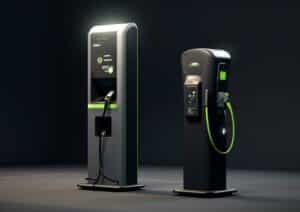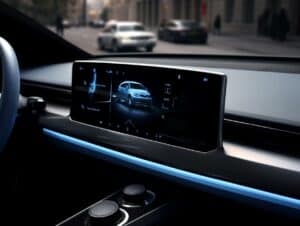Most electric vehicle (EV) owners primarily charge their vehicles at home, which presents one of the most favorable aspects of owning an electric vehicle: the convenience of plugging in your electric car upon returning from work and waking up to a fully charged battery the next morning. This eliminates the need to visit the nearest public charging station.
Although public charging is accessible to EV owners requiring it, it’s not uniformly dependable, and certain regions still have limited charging infrastructure. This might entail meticulous route planning or occasional deviations for electric car drivers, but rest assured, many conveniently positioned public EV charging stations can be found.
In optimal conditions, public charging involves a straightforward process: plug in your vehicle and wait until it accumulates adequate charge to reach your destination, or at least the next public EV charging station. Nonetheless, achieving this smooth experience requires familiarity with several intricacies.
As the rise of electric vehicle (EV) gain momentum in the automotive landscape, the significance of public EV charging stations cannot be understated. Charging stations have become essential refueling points for electric car drivers, ensuring that their vehicles remain powered and ready for the road. To navigate this evolving landscape, understanding the practical aspects of how public EV charging stations work is crucial for both current and potential EV owners.
How Do Charging Stations Work Across Different Types of Public EV Charging Stations?
Getting a better understanding of the various EV charging levels will help optimize your EV experience. Knowing when to use each type helps you plan your charging strategy for different situations – making your EV journey smoother and more efficient. When it comes to public EV charging stations, there’s a trio of options that cater to varying charging needs. Let’s break them down in simple terms:
1. Level 1 Charging – The Steady Overnight Charge
Simply put, Level 1 charging is your option for home charging. It’s as easy as plugging your vehicle into a regular electrical outlet. It’s a slow and steady process, similar to how you charge your phone overnight. This type of charger is excellent for when you’re parked for a long time, like at home.
2. Level 2 Charging – The Faster Boost
Now, let’s talk about Level 2 charging. Picture those charging stations you might find at shopping centers, offices, or even at your workplace. They’re faster than Level 1, kind of like a quicker power-up for your EV battery. If you’re busy in the office and hoping to fuel your electric vehicle, the Level 2 charger is a good option for workplace charging. They can also be installed as a home Level 2 EV charging station.
3. DC Fast Charging – The Express Pit Stop
Here’s where things get exciting. DC fast charger is like the express lane of charging. It’s designed for when you need a rapid charging option for your electric car, like during a pit stop on a road trip. These charging stations provide a big charge quickly, so you can get back on the road without a long wait. Level 3 public charging stations are typically found on highways or in spots where you’re not planning to stay for too long.
Critical Components of Public EV Charging Stations
Electric Vehicle Supply Equipment (EVSE) is the hardware that delivers electrical energy from an electricity source to charge an electric vehicle’s battery. The main components of EVSE are as follows:
1. Charging Station (Charge Point or EV Charger):
The actual device where an electric vehicle plugs in to charge. This can range from simple wall-mounted units to more complex pedestal-mounted units with multiple outputs and advanced features.
2. Electrical Supply Equipment:
This includes the electrical infrastructure necessary to deliver power from the grid to the charging station, such as transformers, circuit breakers, and wiring.
3. Connectors and Plugs:
These are the interface between the charging station and the vehicle. They vary depending on the standard and the level of charging. For example, some common types include the J1772 connector for Level 1 and Level 2 charging in North America, and the CCS and CHAdeMO for DC fast charging.
4. Cable and Retractors:
A cable connects the EVSE to the electric vehicle. Cable management systems or retractors help keep cables off the ground and reduce wear and tear.
5. User Interface:
This could be a physical interface on the charger or a digital interface such as an app. It allows for starting, stopping, scheduling, and monitoring the charging process, and often includes payment systems if the EVSE is part of a public charging network.
6. Metering:
Most charging stations include metering devices to measure how much electricity is used. This is necessary for billing purposes in public or commercial stations and for users to monitor energy consumption.
7. Communication Equipment:
Modern EVSE typically can communicate with the vehicle, the user, and the network operator. This can include wired or wireless communication standards for data transfer regarding the charging status, control commands, and remote diagnostics/maintenance.
8. Protection Equipment:
EVSE includes multiple safety mechanisms, such as ground-fault circuit interrupters (GFCI), overcurrent protection, surge protection, and connectors that de-energize when not plugged into a vehicle.
9. Housing and Infrastructure:
This is the physical casing that protects the charging station’s components from environmental factors. The infrastructure might also involve the necessary construction for installing the EVSE, like a concrete pad, mounting hardware, or pole.
10. Authorization System:
For public and commercial EVSE, there’s often a method of user authorization required to initiate charging, which could be through RFID, mobile apps, or credit card payments, geared towards restricting access to authorized users and processing payments.
11. Data Management:
Back-end data management systems are essential for networked EVSE. This system collects data, manages billing and authorizations, provides customer service, and helps with the remote management of charging stations.
EVSE can vary significantly in complexity and capability. Residential chargers are generally more straightforward, while commercial and public chargers may include a wide array of additional features, such as the ability for demand-response interactions with the power grid or integration with renewable energy sources.
Safety First: Charging Securely at Public Stations
Safety is paramount when plugging in your EV. Thankfully, public charging stations are designed with safety in mind:
Electrical Safety: The infrastructure is built to handle the electrical load required for charging. Just like you wouldn’t stick your finger in a power outlet, don’t tamper with the EV charging equipment.
Fault Protection: Charging stations have safeguards to prevent faults and surges, keeping you and your EV out of harm’s way.
Regulations and Standards: Reputable charging stations adhere to strict regulations and standards to meet safety criteria.
Understanding the EV Charging Process
By understanding this straightforward charging process and the factors affecting charging time, you’re now well-equipped to know how public EV charging stations work.
Step 1: Plugging In and Starting the Charge
Charging your EV at a public station is similar to charging your phone. Here’s how it works:
- Find the Station: Locate a nearby charging station using EV-specific navigation apps or online maps.
- Park and Access: Park in the designated spot and use your membership card, app, or RFID card to begin.
- Connect the Cable: Plug one end into the station, and the other into your EV – just like your phone charger.
- Start Charging: Initiate the session via the station’s interface, app, or card, like powering up your phone.
Step 2: Time Your Charge
Several factors influence charging duration:
- Battery Capacity: Bigger battery, longer charge – like a larger laptop, it takes more to charge.
- Charging Speed: Levels 1, 2, and DC Fast vary. Level 1 charger is slow (overnight fill), Level 2 is faster (lunch break), and DC Fast charger is quickest (road trips).
- State of Charge (SoC): Low battery charges faster initially, slowing as it nears full to protect health.
Step 3: Maximize Efficiency
To make the most of your charging session, consider these practical tips:
- Strategic Charging: Level 2 for quick stops, DC Fast Charging for longer breaks or trips.
- Plan Ahead: Map charging stations on your route, minimizing waits and maximizing readiness.
Payment Options: Tailored to Your Convenience
Paying for EV charging is a self-service affair, much like using an ATM. There are two primary methods to settle your charging costs:
Option 1: Account-based Payment
If you’ve set up an account with a charge point operator or a mobility service provider, this method will suit you. They typically provide you with an RFID card or a fob, which acts as your digital identification key at public charging points. When you charge your EV, the associated costs are logged into your account and later billed to you.
Option 2: Credit Card Payment
Some public EV charging stations offer the convenience of paying directly through your contactless debit or credit card or via a charging app. This route gives you more flexibility, enabling you to use charging stations across various networks. However, be aware that this approach could result in slightly higher fees due to transaction charges imposed by some operators. Moreover, it might be a tad trickier to keep a precise tab on your charging expenses.
The Bright Future of Public Charging
As EV adoption continues to surge, expect to see advancements in charging infrastructure:
More Charging Points: Public charging stations will become even more accessible, making your EV journey smoother.
Faster Charging: Advancements in battery and charging technology will lead to quicker charging times.
Renewable Energy Integration: Charging stations could harness solar and wind power for greener charging.
How Do Public Charging Stations Work for a Smooth, Secure Charging Experience
In a nutshell, public EV charging stations offer different types of charging options, ranging from quick Level 2 charging to the rapid boosts of DC Fast Charging during road trips. When seeking an understanding of statements like “How do car charging stations work” or “How do EV charging stations work”, the importance of safety mechanisms and the understanding of public EV charging stations can ensure a smooth and secure charging experience.
Additionally, being aware of charging protocols and their compatibility with your EV helps streamline the process. To fully harness the potential of public EV charging stations, consider diving deeper into other available resources. Explore EV-specific navigation apps, charging network websites, and community forums to stay current on the latest developments, find optimal charging station locations, and share experiences with fellow EV owners. Armed with this knowledge, you’ll not only tackle the challenge but also navigate the world of public charging with confidence.







